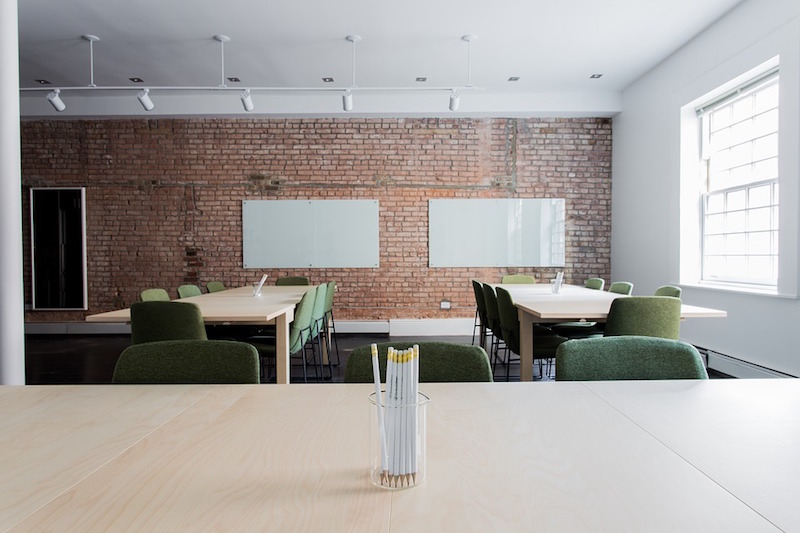Perkins Eastman recently announced the publication of white paper “Measuring Up: Using Pre- and Post-Occupancy Evaluation to Assess High-Performance School Design.”
“Measuring Up” documents a design research study conducted by Perkins Eastman that used the Dr. Martin Luther King, Jr. School, located in Cambridge, MA, as a test case. The study showed that the high-performance design strategies employed in the design of the MLK School had a significant and measurable impact on both occupant satisfaction and building performance. These findings tie high-performance design strategies to improved building performance and increased satisfaction, bringing the theoretical value-add proposition for high-performance design into reality.
The overarching goal of the school’s design was to synthesize objectives to enhance educational outcomes within this urban district and to pursue attributes of Net Zero Energy. Together, these goals inspired a sustainable, high-performance urban learning environment that can serve as a prototype for the school district and potentially nationwide. These same lessons also add to the design industry’s understanding of high-performance design.
The white paper is co-authored by a group at Perkins Eastman representing broad research, sustainability, and K-12 school design. Sean O’Donnell, leader of Perkins Eastman’s K-12 practice, says, “By evaluating and analyzing our work, we are able to make smarter decisions moving forward to enhance educational outcomes, improve our communities, and reduce our environmental impact—and to do so in the most economical means possible.” He continues, “This feedback loop moves us closer to creating truly sustainable, high-performance learning environments for our clients and communities.”
Perkins Eastman’s study is distinguished from other academic studies investigating Indoor Environmental Quality (IEQ) in schools in that it was designed to examine multiple, concurrent factors—producing a more holistic picture than single variables studied in isolation can provide. In Perkins Eastman’s study, satisfaction levels increased between 53-66% in every measure, indicating meaningful improvement. These measures included: daylight, thermal comfort, acoustics, and air quality.
By showing that even minor improvements in building performance using high-performance design strategies can significantly impact occupant satisfaction and performance, this case study becomes applicable to any industry where occupant performance is significant— especially in educational, office, and healthcare environments.
“Measuring Up” is available for download here.
Related Stories
| Oct 15, 2014
Harvard launches ‘design-centric’ center for green buildings and cities
The impetus behind Harvard's Center for Green Buildings and Cities is what the design school’s dean, Mohsen Mostafavi, describes as a “rapidly urbanizing global economy,” in which cities are building new structures “on a massive scale.”
| Oct 12, 2014
AIA 2030 commitment: Five years on, are we any closer to net-zero?
This year marks the fifth anniversary of the American Institute of Architects’ effort to have architecture firms voluntarily pledge net-zero energy design for all their buildings by 2030.
| Oct 9, 2014
Regulations, demand will accelerate revenue from zero energy buildings, according to study
A new study by Navigant Research projects that public- and private-sector efforts to lower the carbon footprint of new and renovated commercial and residential structures will boost the annual revenue generated by commercial and residential zero energy buildings over the next 20 years by 122.5%, to $1.4 trillion.
| Sep 29, 2014
Living Building vs. LEED Platinum: Comparing the first costs and savings
Skanska USA's Steve Clem breaks down the costs and benefits of various ultra-green building standards and practices.
| Sep 24, 2014
Architecture billings see continued strength, led by institutional sector
On the heels of recording its strongest pace of growth since 2007, there continues to be an increasing level of demand for design services signaled in the latest Architecture Billings Index.
| Sep 22, 2014
4 keys to effective post-occupancy evaluations
Perkins+Will's Janice Barnes covers the four steps that designers should take to create POEs that provide design direction and measure design effectiveness.
| Sep 22, 2014
Sound selections: 12 great choices for ceilings and acoustical walls
From metal mesh panels to concealed-suspension ceilings, here's our roundup of the latest acoustical ceiling and wall products.
| Sep 9, 2014
Using Facebook to transform workplace design
As part of our ongoing studies of how building design influences human behavior in today’s social media-driven world, HOK’s workplace strategists had an idea: Leverage the power of social media to collect data about how people feel about their workplaces and the type of spaces they need to succeed.
| Sep 7, 2014
Behind the scenes of integrated project delivery — successful tools and applications
The underlying variables and tools used to manage collaboration between teams is ultimately the driving for success with IPD, writes CBRE Healthcare's Megan Donham.
| Sep 4, 2014
Best of education design: 11 projects win AIA CAE architecture awards [slideshow]
The CAE Design Excellence Award honors educational facilities that the jury believes should serve as an example of a superb place in which to learn. Projects range from a design school in Maryland to an elementary school in Washington.
















